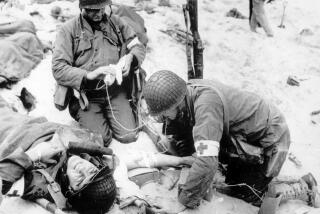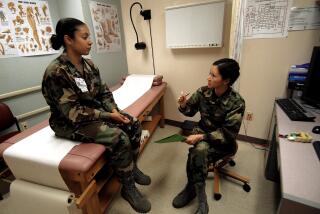On the medical front
âLong trains of ambulances, dripping with their gory burdens, were continually arriving at the designated spots for field hospitals,â a witness to the 1864 Battle of Spotsylvania Court House in Virginia reported. âSome of the sufferers were pale and silent, the life-blood nearly exhausted; some were mutilated with the most frightful wounds; prayers, sighs, groans were heard on all sides. The surgeons, bloodstained to the elbows, were busy with knife and probe. Piles of arms, legs, hands, feet, and fingers covered the ground.â And this was the good news. As Ira M. Rutkow writes in âBleeding Blue and Gray,â an excellent instance of medical history with equal emphasis on medicine and history, the commentator was describing how much patient care had improved since the start of the Civil War and the First Battle of Bull Run -- or the Battle of First Manassas -- in July 1861.
In that sorry conflict, Rutkow points out, âwith few available surgical supplies and no plans in place to evacuate casualties, the injured lay for days on the ground where they fell, suffocating in their own vomit and delirious from infection. Many received neither medical attention nor so much as a mouthful of water.â Nor was there any coordinated medical care or even an approach to care. In the early 1860s, there was no cohesive American medical community but rather combatant medical camps; homeopaths and spiritualists demanded equality with traditional physicians, who themselves lacked understanding of communicable diseases and human physiology.
âModernâ medicine is by definition limited to what is known at the present. However painful and primitive the treatment in the mid-19th century, it was the norm. Treatments were generally the same herbal and mineral concoctions in use since the time of Hippocrates; the insistence by a leading American physician, Benjamin Rush, on bleeding, blistering and purging for every imaginable ailment brought about tens if not hundreds of thousands of unnecessary deaths in the preceding century. As unenlightened as those practices seem to us, todayâs treatments also may be viewed by future physicians with dismay. Civil War doctors did the best they could with the knowledge they had.
It would not be until the end of the war, in 1865, that English surgeon Joseph Lister would introduce antiseptic into operating rooms and thus vastly lower the almost 50% fatality rate of surgery; it would not be until 1877 that Louis Pasteur would show that killer organisms rendered harmless could provide immunity against any number of diseases; and it would not be until 1880 that German scientist Robert Koch would show that microorganisms were the root of disease, not the result. Penicillin, the first antibiotic, was first tried on a human in 1941 and not widely available until 1943 (and then reserved mostly for soldiers). Until the advent of antibiotics, about the best a doctor could do when confronted with a gangrenous limb was to amputate above the infection to prevent an agonizing death.
About 600,000 Americans died in the Civil War; almost as many were left debilitated or disfigured, generally by amputation. Daily conditions in the military camps rivaled the carnage on the battlefield for hellishness. By May 1862, dysentery and other epidemic diseases largely caused by troops drinking water contaminated by human waste had left one-fifth of the Union Army too ill to fight.
But âBleeding Blue and Grayâ is more than a compendium of illness and gore. Rutkow, a clinical professor of surgery at the University of Medicine & Dentistry of New Jersey, has written three highly regarded books about progress in the operating room, including âSurgery: An Illustrated History.â Here, his vivid descriptions of battles and of the horrors faced by soldiers and surgeons are matched by equally vivid accounts of the political battles in Washington, D.C., over the direction of military medicine.
The second front of the Civil War was fought in Washington over who would control military medical care -- politicians or physicians. Especially interesting is Rutkowâs recounting of the feud between Secretary of War Edwin M. Stanton and Surgeon General William Alexander Hammond. Their surrogates abetted the pairâs contentious scramble for primacy in medicine and political power with dubious reports and scabrous assertions to the public and to a U.S. Congress that as late as 1862 had no sense of the breadth and brutality of the war.
Rutkow weaves stories of the battlefield and of Washington infighting through character sketches that bring his tale to life, in particular the vast assistance offered by the U.S. Sanitary Commission and its tens of thousands of volunteers, including Louisa May Alcott. He shows the contribution to improved medical care made by Frederick Law Olmsted, better known for his design of New Yorkâs Central Park.
This massively researched, clearly written history is an important contribution to Civil War scholarship. It is also an inviting read for anyone who enjoys peering through a portal to the past. One can only be grateful that whatever the failings of modern medicine, it is unlikely that any of us, as did so many during the Civil War, will ever lie on a makeshift table in a muddy field as a doctor with filthy hands, his clothes soaked with the blood of other unfortunates, takes a saw to one of our unanesthetized limbs. *






